Zhang Weilan, 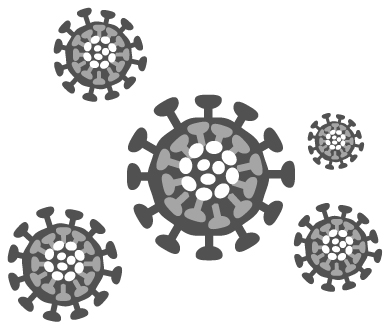 Wang Xiangdong, Wang Yujin, Tan Cong’e
Wang Xiangdong, Wang Yujin, Tan Cong’e
Shaanxi University of Traditional Chinese Medicine and Pharmacology
Published in Acta Chinese Medicine (Zhongyi Xuebao)
February 25, 2020
Translated by Kendra Dale and Heiner Fruehauf
National University of Natural Medicine,
College of Classical Chinese Medicine
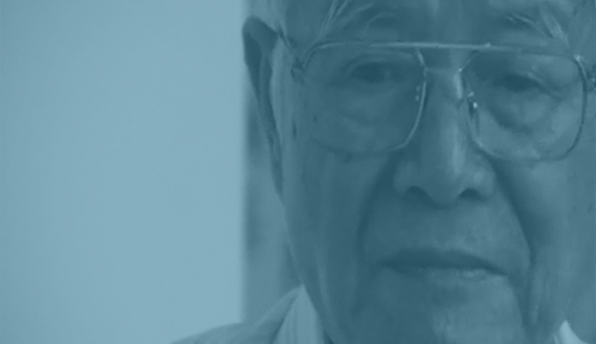
Dr. Deng Tietao
As is well-known in the medical community, SARS is an acute respiratory disease that develops from infection with the SARS-CoV virus. Those infected display similar clinical symptoms to COVID-19 patients, including fever, dry cough, and in some cases, headache, body aches, fatigue and diarrhea. SARS, like COVID-19, was highly transmissible, and in serious cases led to multiple organ failure causing death. The medical team led by Dr. Deng Tietao (1916-2019) excelled at employing differential diagnosis and Chinese herbal medicine. At the time, they were able to achieve zero disease progression requiring the transfer of patients to other hospitals, zero deaths by the disease, and zero transmission to hospital health workers and staff. His contribution to the treatment of SARS with Chinese medicine modalities was therefore immense.
After reviewing Dr. Deng’s accumulated experience treating SARS, the authors have compared it to the presentation of the current COVID-19 disease and put forward clinical treatment principles for consideration during the current outbreak.
![]()
1. Understanding the Timing and Nature of the Disease
When first analyzing the outbreak of SARS, Dr. Deng looked to The Yellow Emperor’s Classic of Medicine (Huangdi neijing) starting with chapter 3 in the “Basic Questions” (Suwen) section: “If there is cold damage in winter, there will be febrile disease in spring”. This passage states that febrile disease is related to hidden cold, and that this type of disease is seasonal in nature. When we look at the timing of the eruption of both the SARS and COVID-19 outbreaks, both epidemics began in December in the winter season, and both can be categorized as a type of febrile disease. “Basic Questions” chapter 72 states, moreover: “When the five types of epidemic appear, they are highly transmissible, and no matter whether mild or serious their symptoms are similar.” Epidemic diseases are therefore different from common febrile diseases in that they present with more than just fever, and that they are highly infectious. Looking at the wide spread of SARS and COVID-19 throughout the population and the similarity in clinical presentation, we can consider both diseases a type of toxic heat pathogen within the disease category of febrile disease. Wu Youke’s (1582-1652) Treatise on Epidemic Pestilence (Wenyi lun) states: “Epidemics are not diseases caused by wind, cold, summer heat or cold, but rather represent an entirely different type of pathogen.” This statement emphasizes that epidemic disease is not just influenced by the six climactic factors, but is more similar to what is described in the ancient dictionary Definitions of Simple and Complex Pictograms (Shuowen jiezi) as a type of evil influence (liqi). It is safe to say that both SARS and COVID-19 fall into this category. Based on the season of disease emergence, the clinical presentation, and the highly infectious nature of the disease, they can be classified as epidemic toxic pathogens (wenyi duxie).
![]()
2. Similar Clinical Presentations Confirm Related Disease Mechanisms
In his Fever School classic, Systematic Differentiation of Warm Disease (Wenbing tiaobian) the Qing dynasty physician Wu Tang (1758-1836) states: “Warm disease enters through the nose and mouth, the nose is ruled by the Lung… Disease in the Lung can reverse into the Pericardium. If the disease is not cured while still in the upper burner, it will transfer to the middle burner.” In his summary of the disease mechanism of SARS, Dr. Deng classified it as a damp heat accumulation pathogen (shire wendu) that obstructs the upper and middle burner. He emphasized that SARS primarily affects the Lung and Stomach systems, and that its causative factor is a type of damp heat pathogen. When analyzing the clinical symptoms of early fever onset, dry cough, chest oppression, poor appetite, and late stage dyspnea, we can see that COVID-19 also primarily affects the upper and middle burners. Wuhan—ground zero for the COVID-19 outbreak—is located in the northeast corner of Hubei province at the meeting point of the Yangtze and Han rivers, and is characterized by damp climate most of the year. The outbreak occurred in winter when cold influences are dominant, and from the presentation of some COVID-19 patients with early stage nasal congestion and runny nose, we can see that cold pathogen is also one of the causative factors.
Although a major distinction is made between cold damage diseases (shanghan) and warm diseases (wenbing) in the Treatise on Epidemic Pestilence, Chinese medicine theory holds that the emergence of disease is always closely related to specific climate and environmental factors. Therefore, to treat this disease effectively, climactic factors, clinical presentation and the basic disease mechanism must all be considered together. From this holistic perspective, COVID-19 can be assessed as a cold damp pathogen, which then further transforms into stagnant heat. Looking at the progression of symptoms, starting with early stage fever and chills; middle stage high fever and mental confusion and chest oppression with asthmatic obstruction; late stage fatigue, dry mouth, and lack of appetite, we can summarize the causative factors of COVID-19 as cold (han), damp (shi), heat (re), toxicity (du), stagnation (yu), and deficiency (xu). This basic outline can give us direction for treating COVID-19 at different stages of the disease.
![]()
3. Elimination of Pathogens Does Not Happen by Killing Germs, but by Providing Pathogens with an Exit
Dr. Deng felt that germ theory is not contained within the Chinese medicine paradigm and referred more to the Fever School terms of pestilential qi (liqi), and chaotic qi (zaqi) as causes for epidemics. These types of qi are created by the stagnation and binding of the six climactic factors with pathogenic qi. Wu Youke felt that pathogenic qi generating epidemics was caused by changes in the seasonal energies, while Wu Tang asserted that pathogens were created in times of disaster such as famine and war, reflecting the interrelation between natural events and human affairs. In current times, COVID-19 has arisen in a time of world-wide climate change with local occurrences of natural disaster and extreme patterns of human behavior, in line with Fever School theories. The source of the pathogen aside, Dr. Deng felt that it was most important to protect the individual’s righteous qi and prevent invasion from pathogenic qi in the approach to SARS. He emphasized the following line from the Yellow Emperor’s Classic: “If there is cold damage in winter it will manifest as febrile disease, and only those who have safeguarded their vital essence can avoid it.”
Furthermore, the reason epidemics are so contagious is related to the extremely toxic nature of the pathogenic influence. To this point, the progression of disease caused by epidemic pathogens can be summarized the following way: it is an infection by pestilential qi, followed by weakening of the righteous qi. Similar to a situation where thieves are locked inside a house, many diseases perform their evil doing when sealed off. In contrast, Chinese medicine procedures do not try to seal the door to kill germs, but bolster righteous qi to dispel pathogens and thus facilitate their exit from the body. The Fever School master Ye Tianshi (1667-1747) in his treatments of warm disease chose to out-thrust wind in order to achieve the outward dissipation of heat, and also dried dampness to draw heat downward, but never attacked the heat directly. In doing so, he was able to clear disease without damaging righteous qi. In the treatment of COVID-19, it is therefore important at the initial stage to dispel pathogens by out-thrusting and relieving the surface and transforming damp. In the middle stage when stagnant heat has become toxic, the principle is to ou-thrust heat and dispel pathogens, release the surface and transform dampness. In the late stage when yin fluids are damaged and righteous qi is weak and pathogens have become overwhelming, it is important to support righteous qi and dispel pathogens while simultaneously protecting and strengthening yin fluids.
![]()
4. The Importance of Disease Stages and Correct Differential Diagnosis
“Warm pathogens attack the upper part of the body, first striking the Lung, then reverse to attack the Pericardium.” Ye Tianshi, in his Discourse on Warm-Heat Diseases (Wenre lun), proposed that febrile diseases can change direction in the course of their progression. Ye Tianshi’s statement establishes that warm disease starts in the Lung and points out that it can move in various directions. Building on this theory, Dr. Deng pointed out that febrile disease should be treated according to its normal progression, but one must also pay careful attention in the process of assessing the more critical stages of disease that can occur after a reversal.
In the course of treating SARS, Dr. Deng stayed faithful to the Fever School diagnostic model of the four levels, namely progression through the protective (wei) level, the qi level, the nutritive (ying) level, and the blood (xie) level. When treating early mild stages of SARS with symptoms of damp wind invasion, he emphasized the application of herbs that transform damp heat and out-thrust pathogens to the exterior, using formulas such as Sanren Tang (Three Seed Decoction) and Sheng Jiang San (Rising and Descending Powder) with modifications. In cases where the surface pathogen was not released, showing symptoms of alternating cold chills and fever, he used Ma Xing Shi Gan Tang (Ephedra, Apricot Kernel, Gypsum and Licorice Decoction) and Sheng Jiang Tang (Rising and Descending Powder) with modifications to relieve the surface with pungent and cooling herbs, and to spread Lung qi and transform damp.
In the middle stage of the disease when epidemic toxins were at their height, he used Ganlu Xiaodu Dan (Sweet Dew to Eliminate Toxin Pellet) to clear heat, transform damp and relieve toxicity. In cases with symptoms of pathogens hiding in the lung membranes, such as alternating fever and chills, body aches, nausea and vomiting he used Da Yuan Yin (Reach the Source Membrane Drink) with modifications to out-thrust and open up the so-called Source Membrane (moyuan) layer and to dispel damp pathogens, also adding Hao Qin Qingdan Tang (Artemisia and Scutellaria Decoction to Clear the Gallbladder) to break up damp heat and clear as well as purge the Shaoyang layer in order to relieve symptoms of chest oppression, irritability, and dry mouth. During the most acute phase of this stage he used Qingying Tang (Clear the Nutritive Level Decoction) and Shengmai San (Generate the Pulse Powder) with modifications to treat fever that worsens at night and heat entering the nutritive and blood levels. The method was to clear the nutritive level and relieve toxins, benefit qi and nourish yin.
In critical cases accompanied by signs of disease reversal he used Shengmai San with Renshen (Ginseng) and Fuzi (Aconite) plus modified Angong Niuhuang Wan (Calm the Palace Pill with Ox Gallstone). The method was to use pungent cooling herbs to open the Heart orifices, boost qi and consolidate separation tendencies. During the recovery period to address damage to both qi and yin, as well as deficient qi with dampness and stagnation, he used Shashen Maidong Tang (Glehnia and Ophiopogon Decoction) for the former and Xuefu Zhuyu Tang (Drive Out Stasis from the Mansion of Blood Decoction) for the latter.
Utilizing Dr. Deng’s methods for treating SARS in the current COVID-19 epidemic, we can divide the therapeutic approaches into the following stages:
EARLY STAGE
This is the period when patients have been sickened for 1-3 days, typically presenting with fever, headache, mild aversion to cold, body aches, poor appetite, and stuffy chest, sometimes accompanied by diarrhea. The tongue coat is thin and white, the pulse is soggy or rapid. The etiology can be primarily described as damp pathogens blocking the Lung and protective qi. The treatment method is primarily to transform damp, release the exterior and reduce fever.
Representative formula: Huoxiang Zhengqi San (Agastache Powder to Rectify the Qi) plus Chai Ge Jieji Tang (Blupleurum and Pueraria Decoction to Release the Muscle Layer) modified.
Base Formula Ingredients: Huoxiang (Agastache), Zisuye (Perilla leaf), Chenpi (Citrus peel), Baizhu (White Atractylodes), Baizhi (Angelica dahurica), Fuling (Poria), Jiegeng (Platycodon), Chaihu (Blupleurum), Gegen (Pueraria), Qianghuo (Notopterygium), Shigao (Gypsum), Huangqin (Scutellaria), Gancao (Licorice).
Modifications: For headaches add Chuanxiong (Ligusticum); for severe aversion to cold add Jingjie (Schizonepeta) and Fangfeng (Siler); for severe stuffy chest add Gualou (Trichosanthes fruit) and Baiqian (Cynanchum).
Formula Analysis: Huoxiang Zhengqi San originates from The Formulary of the Pharmacy Service for Benefiting the People in the Taiping Era (Taiping huimin Hejiju fang). The original formula was designed to treat cold damage with headache, severe aversion to cold with high fever, shortness of breath and coughing, repeated nausea and vomiting, and toxic influences emanating from tropical mountain regions (shangang zhangqi). The main purpose for using this formula in the early stage of COVID-19 is to address the primary etiology of external cold invasion with interior dampness, accompanied by symptoms of nausea and poor appetite.
Chai Ge Jieji Tang originates from Six Treatises on Cold Damage (Shanghan liushu), and addresses simultaneous damage to all three yang levels by wind invasion, causing the complex situation of a blocked exterior with internal heat. Using this prescription at the early stage of COVID-19 infection can release the exterior, clear heat and relieve muscle aches.
MIDDLE STAGE
This is the period from approximately 4-7 days since the onset of initial symptoms. Typical symptoms present with fever accompanied by heat sensations or alternating hot and cold sensations, fatigue, dry cough, a dry and bitter taste in the mouth, poor appetite, shortness of breath, thirst without desire to drink, a white greasy or yellow and thick greasy tongue coating, and a wiry and rapid pulse. The primary etiology tends to be surface pathogens entering the interior and transforming into heat (biaoxie ruli huare) and pathogens trapped in the Source Membrane (xie fu moyuan). The main treatment principle is to clear internal heat and out-thrust pathogens from the Source Membrane (xie tou moyuan).
Representative Formula: Sanxiao Yin (Three Eliminations Drink) combined with Xiao Chaihu Tang (Minor Blupleurum Decoction) modified.
Base Formula Ingredients: Binglang (Areca seed), Caoguo (Tsaoko fruit), Houpo (Magnolia bark), Baishao (White Peony), Zhimu (Anemarrhena), Huangqin (Scutellaria), Dahuang (Rhubarb), Gegen (Pueraria), Qianghuo (Notopterygium), Chaihu (Blupleurum), Banxia (Pinellia), Renshen (Ginseng), Baihe (Lily bulb), Maimendong (Ophiopogon), Jiegeng (Platycodon), Gancao (Licorice).
Modifications: For severe lack of appetite add the “Three Immortals” in charred form: (Jiao) Maiya (Sprouted Wheat), Shanzha (Crataegus), Shenqu (Massa fermentata); for severe cough add Xingren (Apricot seed), Ziwan (Aster), and Pipaye (Loquat leaf).
Formula Analysis: Sanxiao Yin (Three Eliminations Drink) originates from the Discourse on Epidemic Pestilence, which contains the relevant passage: “When there is a white tongue coating during an epidemic disease, the disease is lodged in the Source Membrane… Sanxiao Yin simultaneously clears the interior, the exterior, and places that are neither interior or exterior.” This formula is able to treat epidemic disease on multiple levels by separately guiding interior and exterior pathogens out. At the same time, it is suitable for eliminating pathogenic influences hiding in the Source Membrane. When there is febrile disease with latent damp heat, causing hidden pathogens to linger and stick to the Source Membrane, use this formula as the foundation of your prescription approach and modify as needed. It is able to out-thrust the sticky-greasy damp heat pathogens. Xiao Chaihu Tang, by harmonizing the Shaoyang layer, helps to release epidemic pathogens stuck in the Source Membrane, opens the upper burner, and drains fluids downward.
SEVERE STAGE
This period lasts from approximately days 7-14, and typically presents with unrelenting high fever, ragged, short and suffocated breath, cyanosis, and a scorching heat sensation in the chest or abdomen. Alternatively, it can also manifest in symptoms of extreme fatigue, ice-cold extremities, shortness of breath with sweating, and a faint pulse that appears close to becoming extinguished. From a biomedical perspective there will be acute respiratory distress syndrome (ARDS), severely low blood oxygen levels, metabolic acidosis or multiple organ failure. The etiology of this situation tends to be pathogenic toxins blocking the Lung (xiedu bifei), and internal blockage with external dissipation (neibi waituo). The suggested treatment method is to liberate heat and resolve toxins (jiere jiedu), open the Lung and free blockage (xuanfei kaibi); for those with symptoms of internal blockage with external dissipation, the method is to clear heat from the Heart and open the Heart orifices (qingxin kaiqiao), as well as revive yang and rescue separation (huiyang jiutuo).
Representative Formula: For pathogens and toxins blocking the Lung use Wuhu Tang (Five Tiger Decoction) plus Tingli Dazao Xiefei Tang (Lepidium and Jujube Decoction to Drain the Lungs). For internal blockage with external separation use Shengmai San (Generate the Pulse Powder), and Shen Fu Tang (Ginseng and Aconite Decoction) combined with Angong Niuhuang Wan (Calm the Palace Pill with Ox Gallstone). In addition, use biomedical emergency intervention measures for best results.
Base Formula Ingredients: Shigao (Gypsum), Mahuang (Ephedra), Xingren (Apricot seed), Xicha (Camellia sinensis leaf tips), Tinglizi (Lepidium seed), Dazao (Jujube), Gancao (Licorice); or Renshen (Ginseng), Maimendong (Ophiopogon), Wuweizi (Schisandra), Fuzi (Aconite) plus Angong Niuhuang Wan in patent remedy form.
Modifications: For fever that does not retreat add Qinghao (Artemisia) and Chaihu (Blupleurum); for severe wheezing and suffocation symptoms add Qianhu (Peucedanium) and Jiegeng (Platycodon); for heat in the chest and abdomen add Sheng Dihuang (Raw Rehmannia) ; and for shortness of breath with weakness add Huangqi (Astragalus).
Formula Analysis: Wuhu Tang originates from the traditional medical primer, Elaborations on Pediatric Treatments (Youke fahui), and primarily treats severe panting with fever and yellow phlegm, or asthmatic suffocating pneumonia in modern medical terminology. During the treatment of SARS this remedy played an important role. Tingli Dazao Xiefei Tang was first mentioned in the classic Essentials from the Golden Cabinet (Jingui yaolüe), and primarily treats swelling and fullness in the lungs and chest accompanied by gasping when prone. The two formulas used together can lessen Lung obstruction with excess heat, pathogens and toxins blocking the Lung leading to dyspnea and suffocating asthma when lying down. Shengmai San and Shen Fu Tang are both important prescriptions for rescuing yang and treating reversal patterns, and Angong Niuhuang Wan traditionally exhibits good results in the treatment of interior blockage with exterior dissipation.
RECOVERY PERDIOD
This period begins approximately around day 14, and is marked by lessening of fever, weakness and fatigue, sweating, poor appetite, dry mouth and throat, possibly diarrhea or loose stool, a dark red tongue color, and greasy tongue coating. The etiology of this stage is characterized by a retreat of pathogenic influences and weak righteous qi, and overall decreasing yet lingering presence of dampness. The recommended treatment approach is to boost qi and restore the body’s righteous defense mechanisms (yiqi fuzheng), and build the Spleen and dispel dampness (jianpi qushi).
Representative Formula: Shashen Maidong Tang (Glehnia and Ophiopogon Decoction) with Shen Ling Baizhu San (Ginseng, Poria and While Atractylodes Powder) modified.
Base Formula Ingredients: Beishashen (Glehnia), Maimendong (Ophiopogon), Tianhuafen (Trichosanthes root), Yuzhu (Polygonatum odorati), Sangye (Mulberry leaf), Dangshen (Codonopsis), Baizhu (White Atractylodes), Baibiandou (Dolichos bean), Gancao (licorice).
Modifications: for obvious weakness and fatigue add Taizishen (Pseudostellaria); for sweating add Fuxiaomai (unripe whole Wheat kernels), Wuweizi (Schisandra); for diarrhea add Sharen (Amomum), Fuling (Poria), Shanyao (Dioscorea).
Formula Analysis: Shashen Maidong Tang originates from the Fever School classic Systematic Differentiation of Warm Diseases and primarily treats dryness damaging the Lung and Stomach, or lack of yin fluids in these organ systems—typical symptoms that often manifest in late stage febrile disease. Shen Ling Baizhu San repairs the vital functions of the Spleen and Stomach, benefits Lung qi, builds the Spleen and dispels dampness. It is designed for treating Spleen weakness and general fatigue after a prolonged illness. Although the pathogenic qi is no longer present at this time, the battle between righteous and pathogenic qi has caused damage to the fluids and the qi of the Spleen and Stomach. When the two formulas are used together, they can help the Lung as well as the Spleen and Stomach systems to return to normal function.
![]()
5. Grasping the Guiding Principles for Herbal Prescribing and Differentiating Disease Stages
Febrile diseases are hot in nature, and are thus mostly treated by prescribing cold and cooling herbs. As stated in Ye Tianshi’s Discourse on Warm-Heat Diseases, it is best to out-thrust heat entering the nutritive layer in the direction of the more superficial qi layer. Materials that are best suited for accomplishing this are Xijiao (Rhinoceros horn; the modern replacement generally used is Shuiniujiao, Water Buffalo horn), Xuanshen (Scrophularia) and Lingyangjiao (Antelope horn). When disease enters the Blood layer one should be most concerned about damaging and disturbing the Blood, so it is best to cool and disperse the Blood using herbs like Sheng Dihuang (Raw Rehmannia), Mudanpi (Moutan), and Chishao (Red Peony). There are, furthermore, differences in treatment recommendations according to the stage of disease. Early stage disease is at the protective weiqi level, and can be treated with pungent cooling diaphoretic herbs or with aromatic herbs that have an out-thrusting effect. Dr. Deng followed this principle by choosing herbs such as Baidoukou (Cardamon), Huoxiang (Agastache), Cangzhu (Red Atractylodes) for his formulas in early stage SARS treatment. For mid-stage disease progression characterized by damp heat and stagnant toxins obstructing Shaoyang, when the up-down qi dynamics are becoming inhibited, Dr. Deng used pungent, bitter and aromatic herbs, or pungent, bitter and drying herbs to clear and purge the Shaoyang layer, dredge the channels and out-thrust pathogens. To achieve this, he chose herbs such as Yinchenhao (Artemisia Yinchenhao), Chaihu (Blupleurum), Qinghao (Artemisia), Caoguo (Tsaoko fruit) to harmonize the Shaoyang system and out-thrust and open the Source Membrane. When qi level heat was robust, he used pungent cold herbs to clear qi and out-thrust heat, or bitter cold herbs to clear heat, purge fire and release toxins. Typical herbs of choice were Qinghao (Artemisia), Shigao (Gypsum), Huangqin (Scutellaria), and Banlangen (Isatis root). In the acute stage when heat toxins had become stagnant, and both qi and yin had been consumed, he used heat clearing and toxin releasing herbs as well as materials that cool and move Blood in order to clear heat and stagnation in the Blood level. At this stage his herb choices were often Shuiniujiao (Water Buffalo horn), Xuanshen (Scrophularia), Sheng Dihuang (Raw Rehmannia), and Maimendong (Ophiopogon). For obstructive heat in the Lung and toxins and pathogens blocking the Lung, he primarily used Xianfang Huoming Yin (Immortal’s Formula for Sustaining Life), administrating high dosages of Jinyinhua (Lonicera) and Huzhang (Polygonum cuspidatum) in addition to herbs that soften hardness and nodules. His reasoning was that at this stage of acute disease characterized by severe inflammation, it is easy for the Lung to be afflicted by fibrosis. Adding Jinyinhua (Lonicera) and Huzhang (Knotweed) prevents fibrotic changes in the lungs during the acute stage of febrile disease. At this stage of the disease, Dr. Deng especially emphasizes using Angong Niuhuang Wan as early as possible, to prevent pathogens from entering the Pericardium and damaging the collateral vessels of the brain. During the recovery period, when righteous qi is weak and pathogens are still strong, and fluids tend to be deficient, besides prescribing sweet and cold substances to moisten and nourish fluids, Dr. Deng added high doses of tonic herbs to support the righteous qi. One example is using Wuzhualong (Ipomoea) in amounts of up to 30 grams per decoction. Dr. Deng has proven the clinical effectiveness of using Chinese herbs in this way in the treatment of SARS. We believe Dr. Deng’s experience treating SARS offers an important guide to the use of herbs in the treatment of COVID-19.
![]()
6. The Importance of Supporting Righteous Defenses, Boosting Qi and Building the Spleen During the Recovery Period
Warm disease is considered an acute heat disease, and in every stage of the disease there is consumption of righteous qi, as well as signs of damage to the Spleen and Stomach. Therefore, repairing righteous qi and restoring healthy digestion is extremely important. In addition to using tonic herbs, Dr. Deng also emphasized the areas of diet and nutrition to help restore righteous qi. His specific advice was to consume sweet and bland flavored food such as congee with Baihe (Lily bulb) and Gouqizi (Goji Berry), or congee with Shanyao (Dioscorea) and Chixiaodou (Adzuki beans). He asked patients to avoid overeating and the consumption of alcohol, as well as the intake of greasy and fried foods. In addition, he emphasized moderate exercise and adequate amounts of sleep and rest. These diet and lifestyle prescriptions all helped afflicted patients to achieve full recovery from SARS.
![]()
7. Discussion
Febrile disease is an acute heat disease, which tends to differ from cold damage (shanghan) patterns and regular internal medicine diseases. It tends to follow its own pattern of progression, researched by Chinese medicine physicians of the past to avoid catastrophic epidemic developments. In addition, Fever School theories provide us today with a theoretical foundation for the assessment and treatment of infectious diseases. The leading authority of his time in the field of Chinese medicine, Dr. Deng Tietao arrived at unique interpretations of Fever School methodology based on his own clinical experiences. He paid attention to seasonal climactic influences as well as the nature of the pathogen itself, and emphasized the principle of expelling pathogens rather than killing germs; he was guided by the wisdom of the medical classics without an attitude that rigidly refused new ideas; he considered influences of the temporal and the geographical environment as well as patients’ individual constitutions in his treatments, and exhibited unprecedented flexibility in his attempts to produce precise differential diagnoses. During the SARS outbreak in 2003, he was able to demonstrate the unique treatment advantages that Chinese medicine has to offer in a clinical context. COVID-19 is a highly transmissible disease that can cause great harm, but by drawing on the experience of the medical classics as well as Dr. Deng’s treatment precedents, Chinese medicine can majorly contribute to the integrative therapeutic approach to this disease as well as future pandemics.
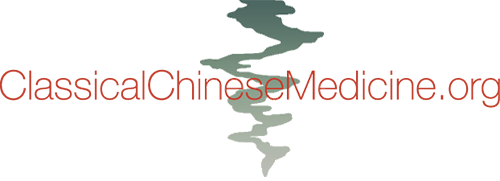
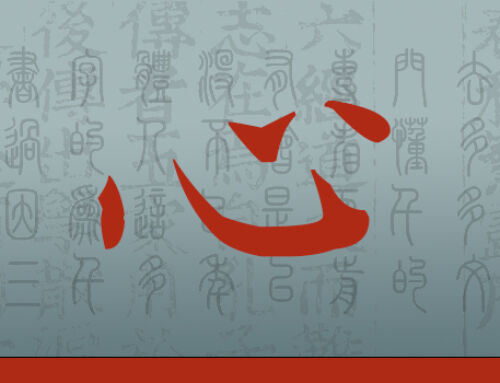

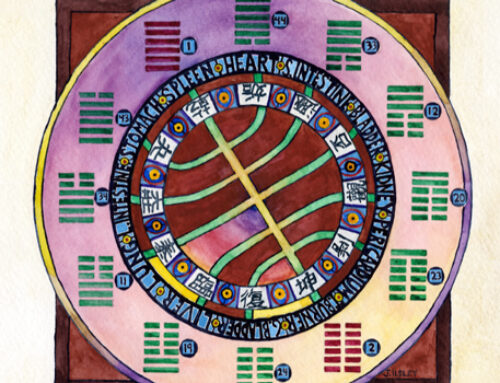


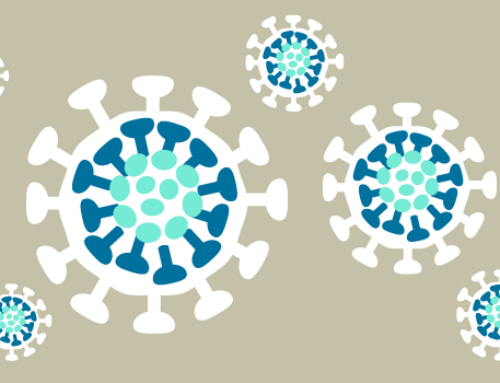
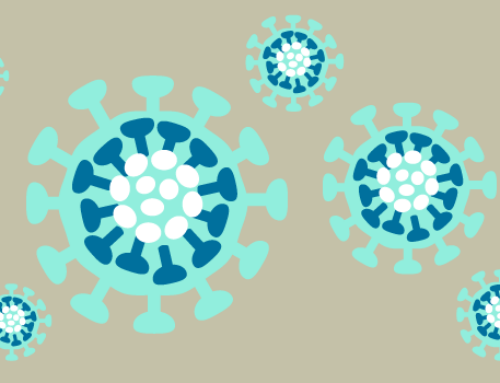

[…] epidemic pathogens possess particular qualities such as cold, damp, etc. It is common that epidemic illnesses are contracted at one time of year, but present symptoms at […]